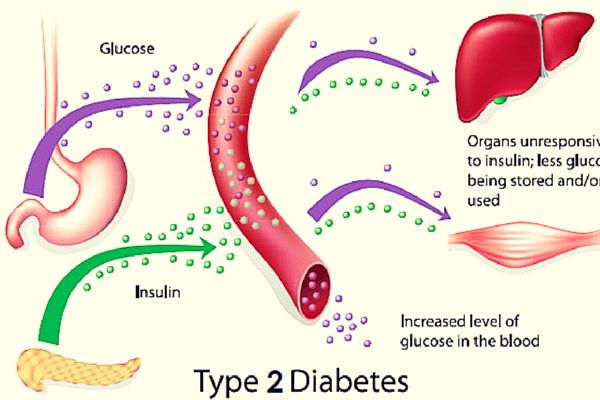Diabetes is fast becoming a common condition, rather than a disease. Because of the high number of people suffering from it, diabetes has somehow become less scary and in effect more manageable. 
The common conception about diabetes is; stay away from sugar, follow a strict diet. Many patients also need to give themselves regular insulin injections. But like most medical conditions, these treatments barely scratch the surface.
Browse through the following post to brush up your knowledge of diabetes.
What happens to a diabetic person?
When we eat food; which is our main source of energy, a hormone called insulin that is produced in the pancreas, breaks down this food that is in the form of sugar and passes it into the cellular level. This broken glucose provides the body with energy. However, for a person suffering from diabetes, this hormone is absent, or is not enough to support the body. This leads to the sugar being passed out of the body without being used.
How does diabetes affect your system? 
Due to the absence of proper deconstruction of food into the system, people suffering from diabetes have to face long term consequences. Some of the most common effects of diabetes are blindness, amputation, damage to the nervous system, blood pressure irregularities and heart disease. Complications increase during pregnancies for women who have diabetes.
What different kinds of diabetes affect us?
There are three basic types of diabetes that are commonly diagnosed.
1. Type 1 diabetes:
This is an autoimmune disease. It is an illness of the immune system where the body fights against itself. The immune system often attacks the healthy cells of the body.
In this case, the pancreas produces almost no insulin and the little insulin that is produced is destroyed by the immune system. Any person is likely to contract this disease; though the possibility is higher in younger adults and children.
Once diagnosed, the patient has to take regular insulin injections to counter the action of the immune system.
2. Type 2 diabetes: This is the most common type of diabetes.  If you have a family history, are overweight or obese, or have reached a certain age, the possibility of contracting this disease is more. In this case, although insulin is produced, it is rejected by the body in an action termed as insulin resistance.
If you have a family history, are overweight or obese, or have reached a certain age, the possibility of contracting this disease is more. In this case, although insulin is produced, it is rejected by the body in an action termed as insulin resistance.
3. Gestational diabetes:
This is the type of diabetes that only affects pregnant women. Chances of getting type 2 diabetes are more if you suffer from gestational diabetes.
4. Pre diabetes:
Though this is a variation of type 2 diabetes, it deserves a special mention because of the high risk factor. Pre diabetes is a condition when a person suffers from diabetes, but displays no symptoms. Though the sugar level is high, it doesn’t show up as an alarming sign.
What symptoms should you watch out for?
Though the symptoms may be different in each type, there are some common reactions to watch out for. These include fatigue, nausea, tiredness, thirst, weight loss, and low healing. Also, if you’re slightly overweight or obese, you have a high risk of developing the disease.
What are the diagnostic tests? 
Usually, a diagnostic test for diabetes will check the sugar level in your system. If the sugar level is more than normal, then the test will show positive results with the conclusion that the sugar is not being broken down in your system.
In this case, if the level if more than 200mg/dL when measured, then one would usually test positive. These tests are usually advised to be taken when the patient has fasted for at least 8 hours.
Another more accurate test called the oral glucose tolerance test is taken after a person has consumed water with glucose. If the level of sugar in the blood, after a couple of hours is more than 200md/dL, then the patient tests positive.
Diabetes management and care:
Needless to say a diabetic person must lead a disciplined lifestyle; especially when it comes to food. Diet control is the first step to prevent obesity that further increases risk of this disease. If you have diabetes and are looking for better control, make up a food plan. An insulin shot is to be taken before your meals as per your doctor’s advice. Never skip a
meal.
Apart from this, doctors advise regular exercise which increases metabolism and regulates blood flow.
Age 60 year, muscular dystrophy , diabety 2 hi, cataract operation ki jankary ,cost btaiay